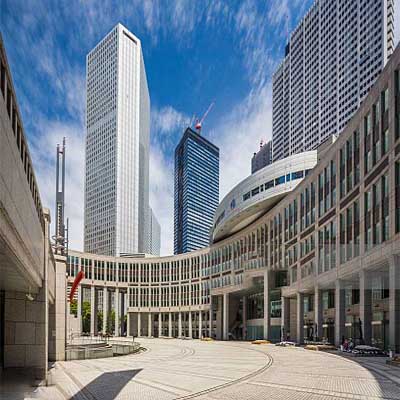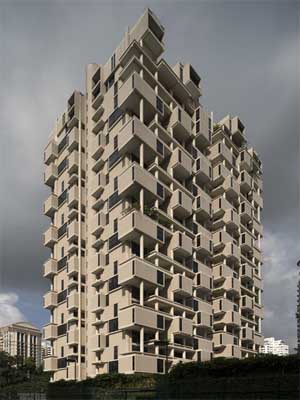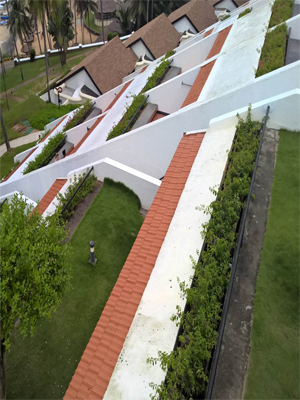Profile
Evolution of Architecture began with the design of pyramids in egypt way back in 2600 BC tranformed in to different system of designs sucha as Roman, Greek, Egyptions, Indian Architecutre refined evolved over the times with beatutiful austhetics and breath talking inventions. maisonette architecture company comitted to the craftmanship of finest designs of all types of buildings at the best focusing on future architecture within the social frame work of the region redifining economic conditions of the society.
Maisonette architecture company also known for dedicated Professional project works, designs, engineering services on all building aspect of focusing on the style of architecture within the social, financial, cultural frame work of the vision maker the influence science and technology.
Influence of great Architects and Architecture over the time inspiring us time and again over shooting our mental strength in to the world of imagination and creativity Throught of great architecture evolves over the time of persuasive and dedicated work experience.
Maisonettee architecure conceptualizing the design of the Future Forms of throught. conclussions are the foundation principles of maisonette design.Come and explore the work of great architecure, energy, the free flowing spaces blended with nature and with thoughtfull design revolves around new ideas, new style.
Human population crosses trillions, demand for housing around the world rises simultaneously. An expensive urban land has directed the architects to design buildings vertically towering high on the sky.
Fire protection system of high rise buildings turning tougher day by day, high speed winds, earthquake, lightening shall be taken case before designing high rise buildings, turning urban design very complex and gravity defying structures.
Sustainable architecture is part of modern architecture, renewable energy solutions; Biophilic design solutions shall reduce hazardous contents due to over loaded human density.
Global environmental standards
LEED leader ship in energy and environmental design serves a framework for healthy and efficient green buildings.
principles of architecture balance.
• Rhythm• Emphasis
• Proportion
• Scale
• Movement
• Contrast
• Unity
Visual design elements
• Line• Colour
• Form and shape
• Space
• Texture
• Value
Line- vertical line represents
Dignity,Formality,Calm,Place,Relaxation.Horizontal line represents
Calm, peace, relaxation.Curved –freedom, action, activity appearance of softness.
Colour- warm colours
Cool colours
Form and shape
Form-(3D) the shape and structure of something an distinguished from its substance or material.
Shape-(2D) the two dimensional contours that -----an object or area.
Interior design
Is interior architecture planned, designed and detailed to the finest form of art using styles of architecture under scientific parameters, in order to make interiors of buildings.
And allied structures to look more beautiful and aesthetically pleasing
Residential interior designCommercial interior design
Public building interior design
Buildings and urban spaces should be designed first and foremost around their occupants, the importance of architecture is a trigger to physical, physiological and psychological well being is nowadays becoming a topic of significant relevance.






Kenzotange








To define interior design is essential to follow symmetry
• Balance• Unity
• Rhythm
• Scale
• Proportion
• Contrast
• Details
Interior design is part of human habitat, workshops, office buildings, public buildings, industrial structures, shopping complexes and so on.
People spend most of the time of the day indoors. Interior design is inside out architecture of a building, a space reckon with thoughtful aesthetics, comfort and asymmetric space extention vertically, volumetrically or horizontally,in design,in architecture, in landscaping, in creativity, in crafts, in arts, so on and so forth a combination of multiple applications of decor elements planned, placed systematically to create built beauty of interior environment.
Matrix imaginations to practical, functional, prefectural, decored An interior of today is a delightful experience to the people who are part of this creativity. Creation, invention, dreams are human instincts subjected to situations of ground reality.
It takes great skill to overcome the circumstances and to contribute perfectionism in all accepts of design fundamentalism to globalism, on regional, vibrant, virtual, vernacular, contemporary, creative and futuristic architecture based on technological revolutions.
From the early civilizations architects have played very important role in upgrading the living standards of the society by buildings villages, citadels, forts, planning and designing palaces, colosseums, religious buildings, and public buildings across the globe may be roman, Indian, Italian, Greek or Egyptian architecture.
Evolution of architecture has led to a different distinct, innovative destination today eventually it finds its own direction of derivative future it is planning and designing everywhere, so is our life, so is this universe, so is this whole system.
We believe in destined melody of this world we believe in education, qualification, professionalism of our team whose think tank has the ability to convert your dreams in to reality on the ground. Team work and endless Efforts- based on professional ethics, principles, Respect- latitudes of love, longitudes of commitments.
We care, admire, appreciate youre need of great living standards life and adhere to abide by your side in building your dreams, rebuilding others there after. We thank for your elaborative effort in studying us, while seek your collaboration and cooperation always. It’s an honour to serve the society for the better living environment.
Works of great architecture direted our course of graduation in design, and its applications in vitual architecture, leading to creative world of rational,functional design.
The works of art from few of these great architects have inspired our mind heart and soul to our extent of extremism,Optimism,metabolisam driving us in to the organirised world of design symbolisam Architecutre is implied applications of creativity under scientific parameters.its implied term of art applied over the time architecture of great forms.
Paulrudolph


Modern Architecture
Based on the sythesis of greek, Roman Egyptian and the rest of the world architecture with technical innovations, new architecture of modernisam has occupied the tables of maisonette design.
Modernisam in Architecture is a style of design satisfied based on the technical architects of reformed thoughts on concepts of design for the future.
Technology innovations has driven the construction Industry
to the new world order. industrialized construction matrials laid
the foundation for modernisam in architects minds, sleek form work, Frame work of trends
in concrete and stel structures have astounded architects throughts towards
future designs of finest forms.
Subjects of specilization in
town planing, urban design, landscape archtectur, interior design, external design
have given rise to design revolution.Expensive urban lands have directed the arrchitects
to design buildings to grow vertical towering up to 590 meters.
Thourgh horizantal growth for cities is the finest option, lack of space has other optional out looks. As Human invention on lifestyle systems become most inventory, housing, transport, communication, infrastructure facilities have grown significantly adding new techniques to modern architecture classfying further in to neo modern, post modern, bio classic, architecture.
It could grow from tradtional architecture to space missions technological platforms of cities, scaling higher and brigher. As human population multiplies we have to derive optional outer space technological inventions to justify the very existence of our survival
science, engineering, technology, planning design and architecture go hand in hand side by side. Architecture is a form of art or full of art, an art of creative thinking leading to evolutionary turn around in innovative form, a multidimensional, multi functional mega processed thoughts of human minds.
Modertn architecture is an absoulute creativity of todays designers to attribute towards social joy zone as Maisonette Trends in Architecture.
Philosophy of Architecture
The relation between philosophy and architecture is interrogative and propositional. It is about asking questions concerning the meaning of human habitation—what it means to live in built environs—and about evaluating plans and design projects where human flourishing and social progress can best occur—in what kinds of buildings, interior spaces and urban precincts.
The following sets of answers an address issues—aesthetic, ethical, and political issues, as well as metaphysical and epistemological concerns—that relate philosophy to architecture. Although philosophy and architectural theory can each be expected to have an interest in any or all of these answers, The focus of the subject is on aesthetic and ethical issues which are, on virtually all accounts, the mainstay of philosophy of architecture.
A consideration of ethical issues in architecture in relation to the aesthetic ones quickly segues into architecture’s relation to social theory and political philosophy.
Charls Corea
Table of Contents
1. Architecture: Discourse and Practice2. Key philosophical Issues
a. Architecture: What is it?
i. Form and Function
ii. Affective Form (Function Follows Form)
iii. Architecture as Means to Social Engineering
b. Architecture and Aesthetics
c. Architecture and Ethics Philosophical Movements and Ideas in Architecture Idealism and Architectural History
a. Phenomenology and Architectural Experience
b. Structuralism and Meaning Postmodernism
Post-structuralism and Power
Selected Lines of Inquiry into Philosophy of Architecture Architecture and Representation
a. Architectural Value and Heritage
b. Environmental Issues
c. Design Pedagogy
1. Architecture: Discourse and Practice
The mixed character of architecture comes from it being a subject of overlapping philosophical and theoretical discourses as well as a category of creative practices. Philosophy of architecture has long been associated first and foremost with aesthetics. While architecture may be an art form, it is not a branch of aesthetics.
In fact (or instead), a case can be made for relocating architecture, as philosophically considered, primarily, though by no means exclusively, within ethics and social and political philosophy. From a philosophical perspective, But from an architectural theorist’s point of view, or the viewpoint of a geographer or city planner, classifying architecture as a topic within aesthetics may seem too narrow or conforming. Of course, treating architecture within aesthetics does not preclude consideration of it from other points of view and it would be equally legitimate to have entries on architecture in companions to social philosophy or evolutionary psychology.
Nevertheless, from these other points of view, placing the philosophy of architecture primarily in aesthetics is misleading. philosophy remains an important source of ideas and validation, but references to philosophical aesthetics are limited. The philosophical study of architecture raises questions in several philosophical sub-disciplines, and many design practitioners show a greater interest in ethical and political issues than aesthetic ones.
The question of where to place the philosophy of architecture is not simply a matter of preference or a topographical question of little importance. Instead, the issue can be linked to architectural practice in ways that enlarge our conceptions of architecture, architectural practice, and the architect. In any case, the question of where to locate the philosophy of architecture highlights significant differences between architectural theorists and philosophers, as to how to conceptualize, analyze, and address a range of topics of common concern.
by considering the concerns of both philosophy and architectural theory, philosophy of architecture enlarges its conceptual and critical domain in ways that impact both philosophical and architectural theoretical approaches to architecture.
2. Key philosophical Issues
Architecture can and has been conceived as an intrinsically philosophical enterprise—grounded in aesthetics and ethics (incluing theories of human nature)—and also in elements of social and political philosophy. Architects, landscape architects, and designers are responsible for creating spaces and fashioning the world (materially and ideationally) in which people live and interact. In so doing they promote as well as undermine certain values, understandings, and ways of living.
One need not cite utopian characterizations of “the City” to make the point that architecture is concerned with material realizations of visions of the good and what it means to live well. Urban culture manifests itself in its architecture.
Debates over the future and planning of the City, including schemes that either rehabilitate or disavow utopian traditions, reinforce this important role Both philosophy and architecture are edifying … [They] make possible all other values of life or all other arts … Architecture is their spatial, philosophy their spiritual home.
In one and the same act, philosophy and architecture enclose man in their shell and structure, and disclose open vistas, new horizons, spiritual possibilities of expansion and self-realization … architecture [expresses] an underlying world-view, a cultural whole, the spirit of an epoch or a people, a dominant value of life—all transcriptions of philosophy… Philosophy and architecture have the coming task of healing the split of knowledge and feeling, of individual and community…
a. Architecture: What is it?
The key underlying question for all of the preceding philosophers and architectural theorists and practitioners is “What is the philosophy of architecture about?” At the same time, we can also turn to ask “How is, how can, and how should philosophy be connected to architecture?” and both of these beg the question “What is architecture?”
The question “What is architecture?” has commonly focused first on how architecture is to be distinguished from “mere” building; and second, on its relation to art. Answers have often depended on how one has sought to reconcile Whether, or to what extent, architecture is to be regarded as an art has long been disputed. One could perhaps just conceive of architecture as a craft pertaining to the fashioning of useful buildings However, if architecture is an art, it is unusual and perhaps unique in that, unlike other art (music, sculpture, visual arts), utilitas (function) is also regarded as an essential part of architecture. While music, drama and the other arts, may serve many functions, including those that are purely aesthetic, and are “practical” in various ways, none of these functions are regarded as intrinsic to their status as an art or to their ontological status—that is, to what they are.
Functionality (utility, purpose, practicality, and so forth) is however, necessary to architecture can be abandoned without loss to their essential character as worthwhile objects of aesthetic attention … But the same cannot be said for architecture. A building which fails in the purpose for which it is built [no matter how aesthetically pleasing] is an architectural failure, whatever other merits it may have.” Even those modernists who see form as preeminent and imply that the inverse of the adage holds true (that function must follow form) may agree with on this. An aesthetically designed material arrangement that has no function or extra-aesthetic purpose may be regarded as a sculpture, and possibly even a “building.” However, on the accounts stemming in theory from Vitruvius, apart from it having some (not wholly aesthetic) function (utilitas), no matter how changeable (the functions of buildings may of course change) or nondescript, it cannot be regarded as architecture.
Given that the elements in the Vitruvian triad are all ingredient in architecture to some degree, the central issue concerning the nature of architecture often rests on determining which of these indispensable elements does or should take precedence and why. Given that the aesthetic (or aesthetic concern) is always necessary, though to what extent, and whether dictated primarily by form or function is disputed, the history of architectural theory can be seen as a debate between those who place emphasis on form rather than function or vice-versa. function should determine form and form should determine function—is arguably the basis of the history of architecture in the last 120 years. It is around these themes that the differences between architects of the late 19th century and the Modernists are best understood.”
Whereas the arts typically are regarded as non-functionally valuable for their own sakes, Ethical problems are at one and the same time aesthetic problems for the architect. This is one, if not “the” defining feature of architecture.







i. Form and Function
Theory and practice may diverge in addressing this question of precedence. In practice, it is clear that some architecture is concerned primarily with function and the performance of buildings however this is conceived (occupationally, economically or in terms of durability, and so forth), and some largely with form. The symbolic and mnemonic demands placed upon commemorative architecture, for instance, typically result in designs with a strong emphasis on form. Of course, the expectation that a monument or memorial convey memories and ideas about the past also entails a kind of functionalist—that is, performative—reasoning. The two elements are not so easily distinguished.
Theoretically speaking, however, the need for a far closer connection between function and form has frequently been envisioned. Some claim that buildings in which form and function are closely related make for better architecture. Those who argue that they do (Pevsner 1937, 11) see a mismatch between form and function (for example, if a commercial establishment were designed to look like a church) as a deception, a fraud, or perhaps morally uncertain.
while “copying of styles and the extensive use of facades” may in a sense be deceptive, it is not immoral, and yet “other things being equal, [ideally] such deception is better avoided, if it can be.” But why its avoidance would be preferable is unclear, and views on the subject are mixed and have changed over time. “A barn disguised as a church would afford satisfaction to none but those who considered it as a trick. The beauty of truth is so essential to every other kind of beauty that it can neither be dispensed with in art nor in morals.”
while “copying of styles and the extensive use of facades” may in a sense be deceptive, it is not immoral, and yet “other things being equal, [ideally] such deception is better avoided, if it can be.” But why its avoidance would be preferable is unclear, and views on the subject are mixed and have changed over time. “A barn disguised as a church would afford satisfaction to none but those who considered it as a trick. The beauty of truth is so essential to every other kind of beauty that it can neither be dispensed with in art nor in morals.”
Contrast this sentiment Louis Sullivan, the architect responsible for developing the architecture of the late 19th century skyscraper in Chicago, is known for the principle—“form follows function” around which possibly most debate in modern architecture and design has focused. Augustus Pugin, known for his work on the Gothic revival, made much the same point. He argued against architectural features unrelated to the purpose of a building. For Sullivan, the principle was metaphysically grounded—a kind of law of nature that was normative.


















